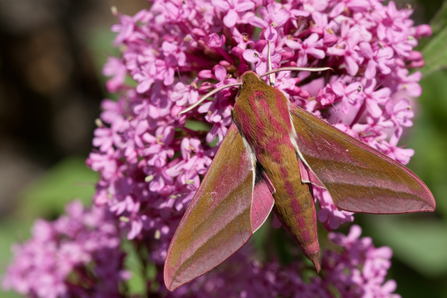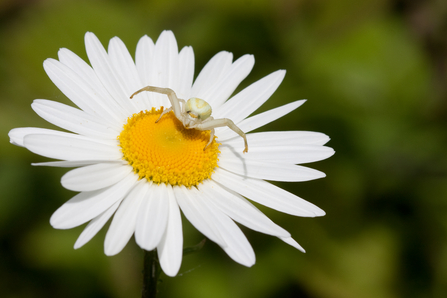Around 90% of the world’s flowers rely on animals, particularly insects, for pollination. So, if you want to attract wildlife into your garden or even a windowsill, planting wildflowers is a good place to start.
Adaptations for pollination
Many flowers provide a sugary substance called nectar as a reward for visiting insects. This provides the energy they need for their busy lifestyles. Some plants, like the common poppy, do not produce any nectar, but produce lots of pollen. Unlike nectar, which is basically sugar water, pollen is packed with protein – a vital ingredient for growth. Some insects exclusively feed on pollen and have interesting adaptations to harvest it. If you watch a bumblebee closely, you can see yellow packets of pollen on their legs. The legs have a hairy brush-like quality which they use to groom themselves and move the pollen stuck to their bodies over to their legs.
Competition for an insect’s attention is fierce, and plants have evolved clever strategies to stay in the game. Cowslips have tubular flowers which typically require a long tongue to reach. Brimstones are long-tongued butterflies that emerge in April when cowslips begin to flower, making them a perfectly timed pollinator. Hibernation uses a lot of energy, so having an early source of nectar prepares brimstones to breed.

Brimstone butterfly on a cowslip flower.
Insects with shorter tongues like buff-tailed bumblebees prefer open flowers such as ox-eye daisies. However, some short-tongued bees such as white-tailed bumblebees have been known to cheat, nibbling a hole at the base of tubular flowers such as foxglove to access a larger quantity of nectar or pollen.
Most pollinating insects have excellent vision and are most attracted to vibrant flowers. They even have additional colours and patterning invisible to humans, but not to insects. Plants such as meadow buttercups which are bright yellow to us, have a black mark in the centre that we cannot see. This is to direct insects to where the nectar is, almost like a landing pad.
Field forget-me-nots take this a step further and change the colour of their 'landing pad' from yellow to black in the ultraviolet light spectrum when they have been pollinated. This instructs insects to avoid pollinated flower, as there is no nectar.
Native flowers support a greater biodiversity of native insects as they have evolved simultaneously, adapting to exploit and co-exist with each other. Lady’s bedstraw, for instance, are the larval foodplants for several species of moth, including the small elephant hawkmoth. This is one of our most colourful moth species.

Elephant hawk moth - Vaughn Matthews
The night-flowering catchfly avoids the crowds by blooming at dusk to attract moths. As they can’t be seen in the dark, they produce a sweet-smelling scent to draw them in. Planting night-flowering species like this is also excellent for attracting bats, as they feed on the moths that pollinate the flowers.
Benefits of wildflowers
The end goal of pollination is to produce seeds and disperse them. Seeds are packed with fats and energy making them a highly desirable food source, so planting wildflowers benefits more than just pollinators. For instance, the seedheads of common and greater knapweeds are enjoyed by seed eating birds such as goldfinches. Seed eating birds rely on these energy resources to put on enough fat to last them through winter, so they really welcome the calorie boost these provide.
Wildflowers can provide shelter too, not just food. They can create a damp environment by shading areas from the sun, vital to creatures such as molluscs and amphibians which are vulnerable to drying out. Having a closer look at a wildflower meadow will yield so much life, including predators like lacewings, ladybirds, and spiders. My favourite is the crab spider which hides on flowerheads waiting for pollinators to visit before they pounce. They can even change colours to match the flower, often seen as yellow or white.

Flower spider crab - Vaughn Matthews
Gardens cover more space than all UK national nature reserves put together so we can make a huge difference by managing our available spaces for wildlife. To help us achieve this, Essex Wildlife Trust are handing out 7,000 free wildflower seed packets as part of The Big Wild Seed Sow. The seeds selected are all hardy, easy to grow, native species that are well suited to different soil types typically found in gardens. There are 27 species in the packet and all the plant species mentioned in this blog are included.

